Abstract
Most air pollution in West Germany is caused by combustion products. Particulate organic matter released by incomplete combustion is suspected to contribute to the "urban factor" of lung cancer frequency in urban-industrial centers. The carcinogenic potential of single components, groups of compounds and total source emissions of combustion processes was investigated in laboratory animals by subcutaneous injection, intratracheal instillation or inhalation. Tests by subcutaneous injection of condensates of automobile exhaust, extracts of coal furnace emissions and of airborne particles and different fractions of these extracts showed that the polycyclic aromatic hydrocarbons (PAH) with four to six benzene rings have the strongest experimental carcinogenicity. However, polar compounds (heterocyclic nitrogen-containing PAH, phenols, and others) also show remarkable carcinogenic potency. There were large differences between the dose-response relationships of several PAHs. In the subcutaneous tissue, benzo(a)pyrene and dibenz(a,h)anthracene are the most carcinogenic of the tested airborne PAHs. Furthermore, they can induce high tumor rates in the lung after subcutaneous injection in newborn mice and after intratracheal instillation of mice or hamsters. The tumor rate of benzo(a)pyrene did not further increase after simultaneous instillation of carbon black, but lead chloride may have a promoting effect. Far more than 100 PAHs are found in the urban atmosphere. However, because of the remarkable similarity of the PAH profiles in the examined samples, it may be sufficient to measure just a few stable PAHs in the urban air in order to facilitate an assessment of the carcinogenic potency of the PAH content in the atmosphere. To examine the carcinogenic or cocarcinogenic effects of gas and vapor emissions, studies with a two-phase model were carried out: phase 1 relates to the induction of a basic tumor rate in the lung by a well known carcinogen, while phase 2 is characterized by an inhalation of the substance under investigation. In an experiment with mice, the inhalation of a mixture of SO2 and NO2 seemed to increase the basic tumor rate induced by dibenz(a,h)anthracene. In a similar two-phase experiment conducted with hamsters, the inhalation of diesel exhaust (total exhaust as well as exhaust without particles) increased a basic tumor rate induced by diethyl nitrosamine. These experiments deserve confirmation before a detailed interpretation is attempted.
Full text
PDF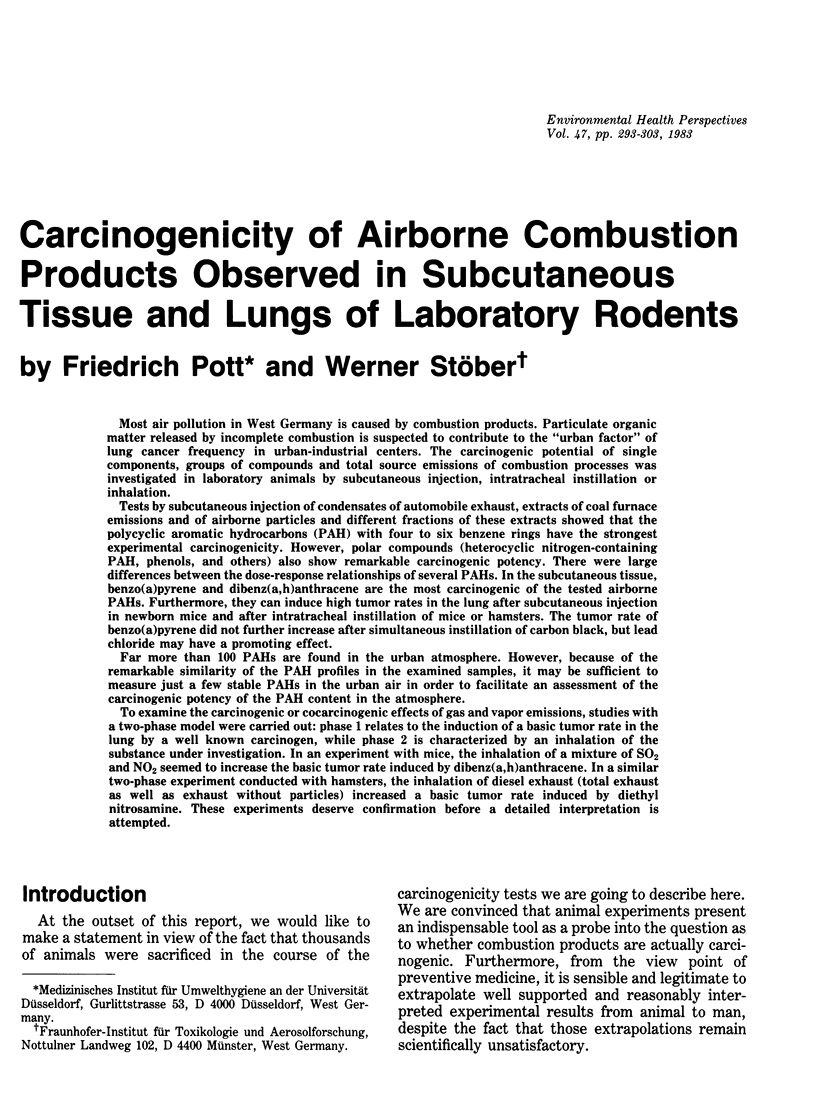
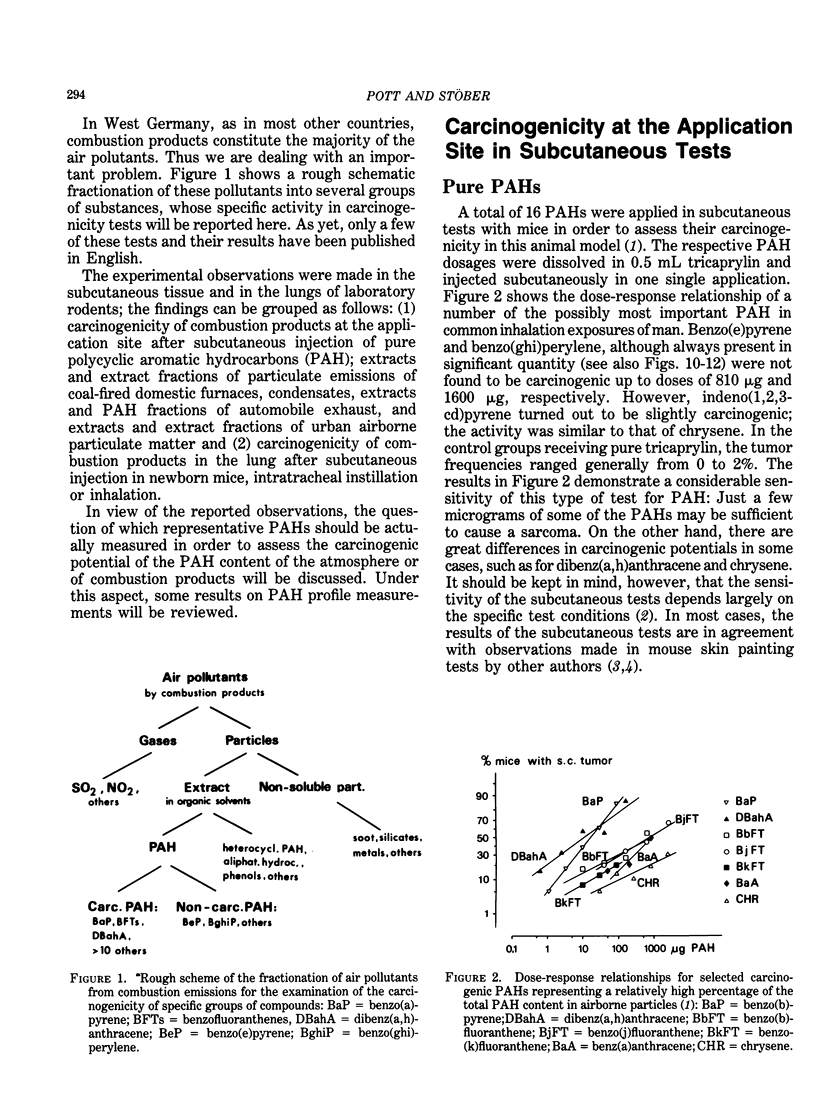
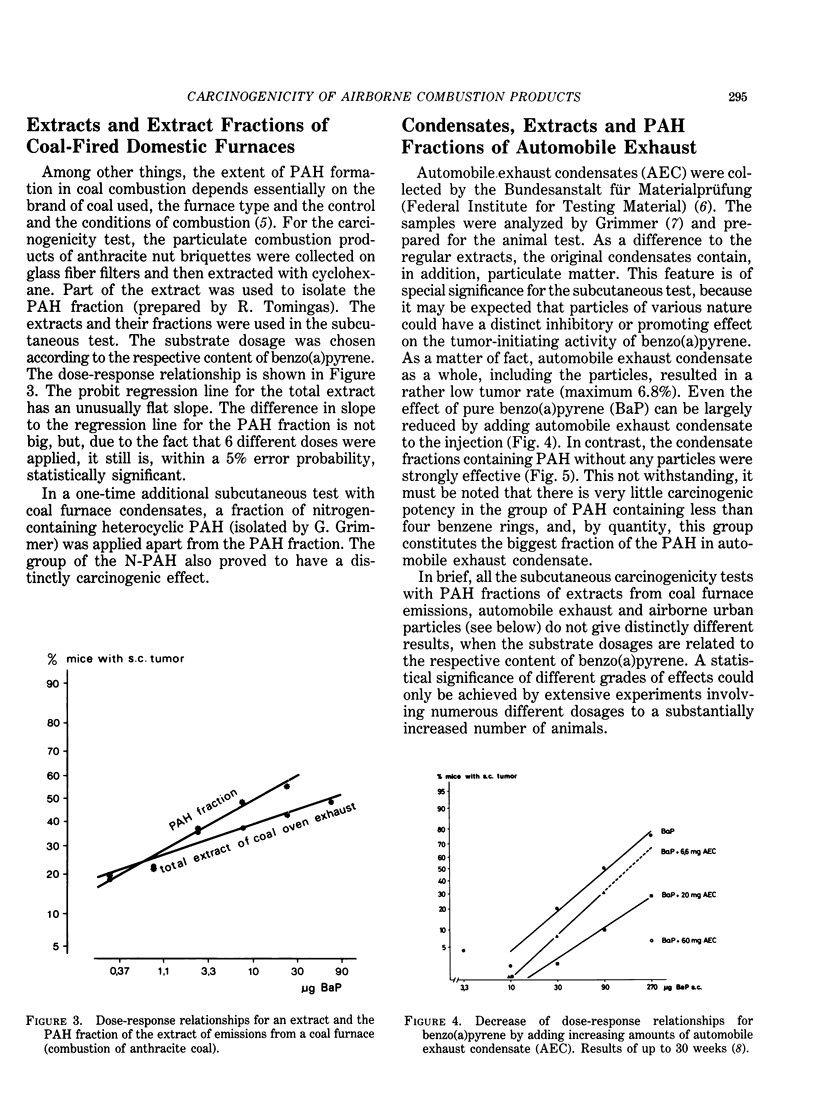
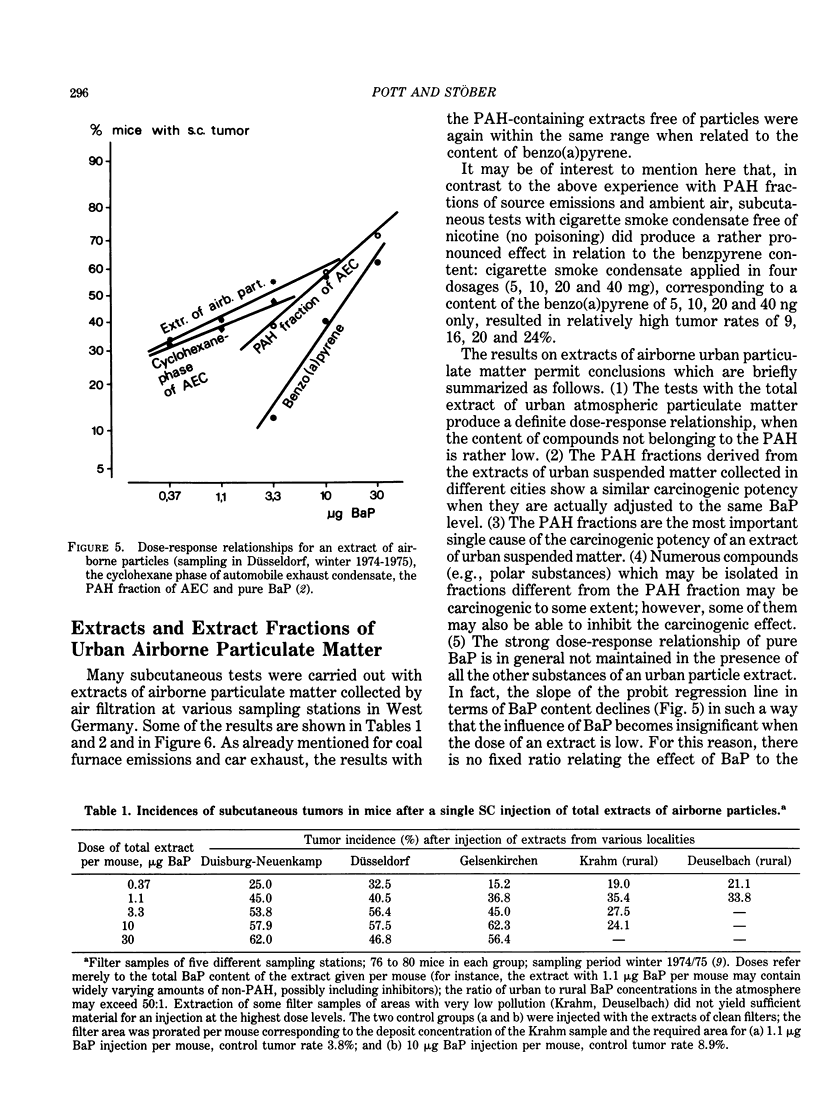

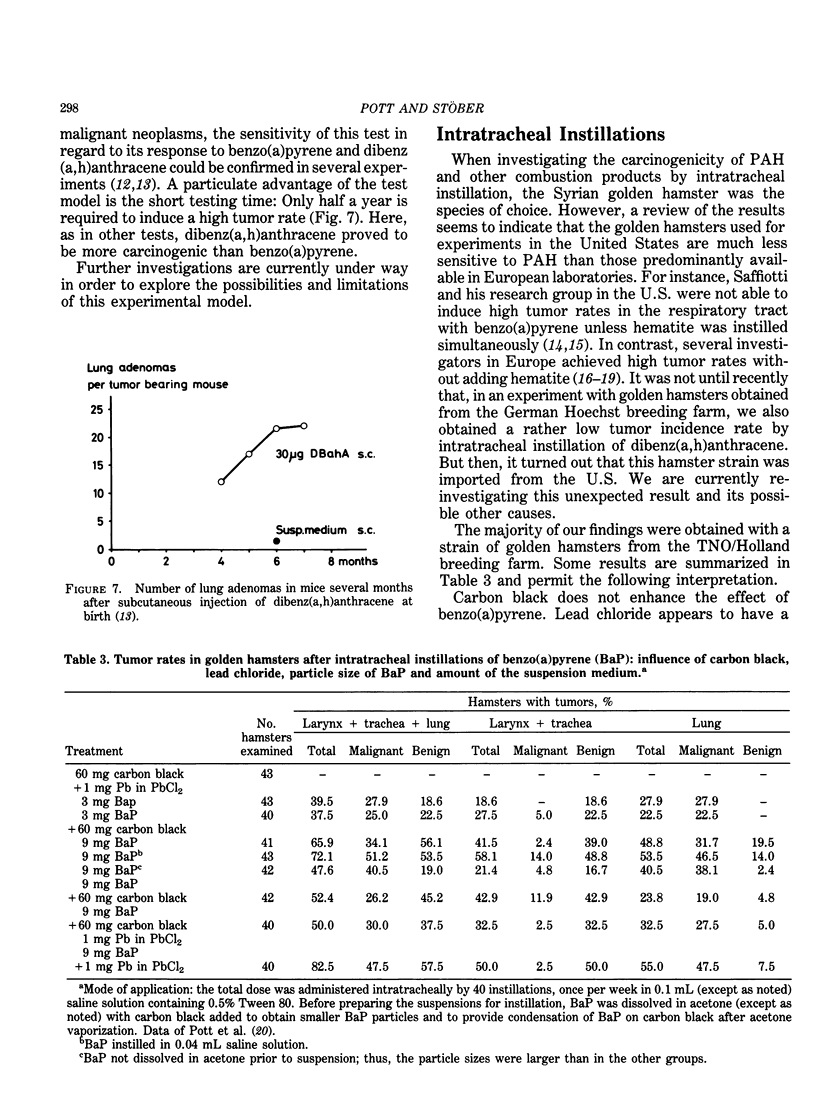
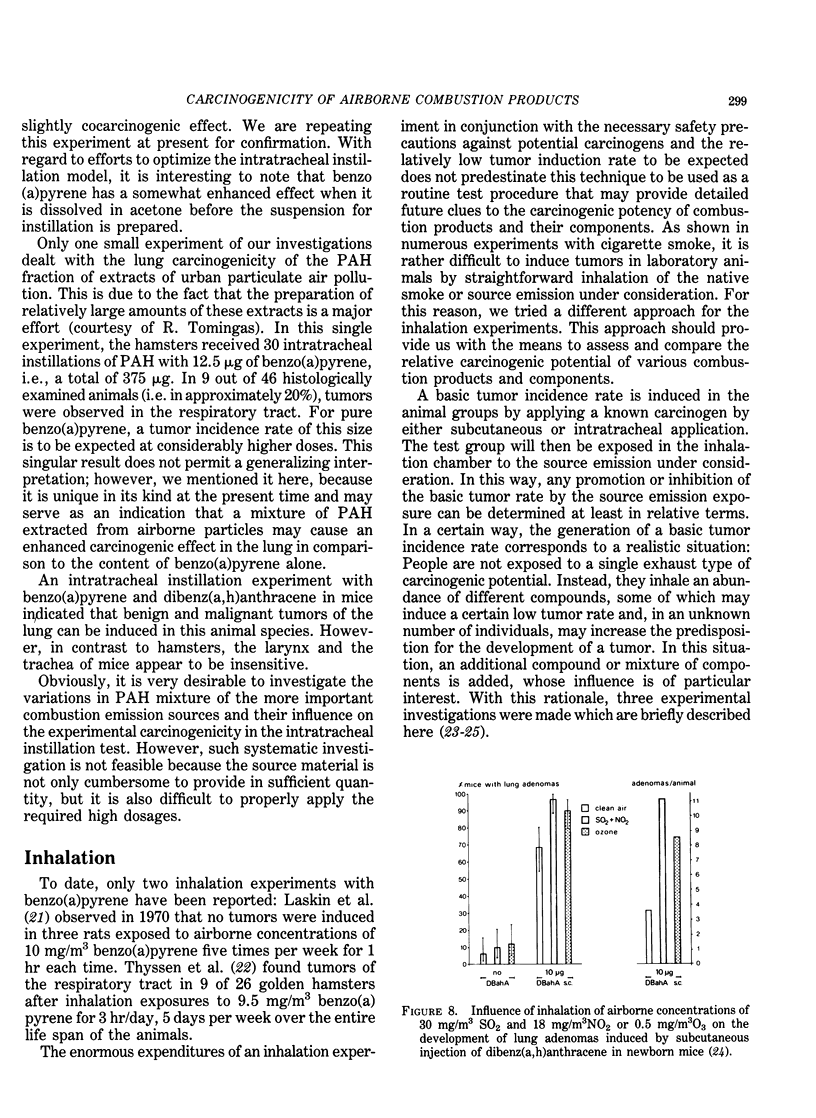
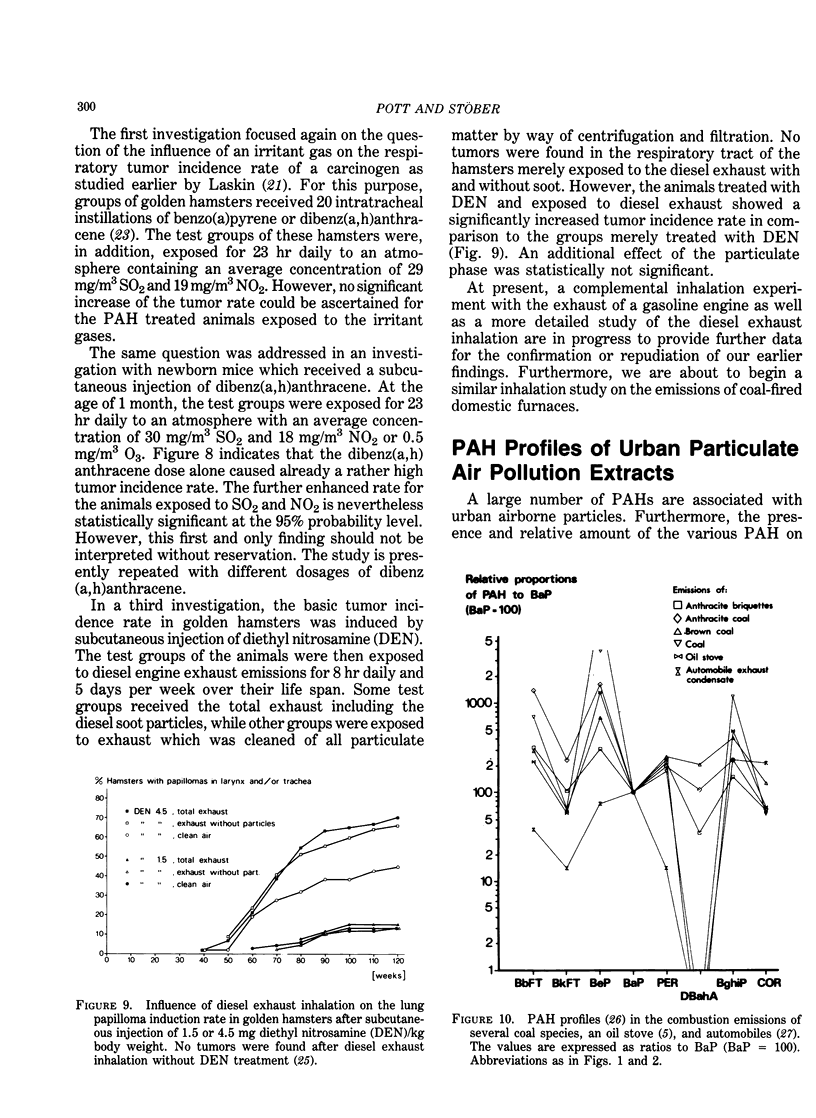

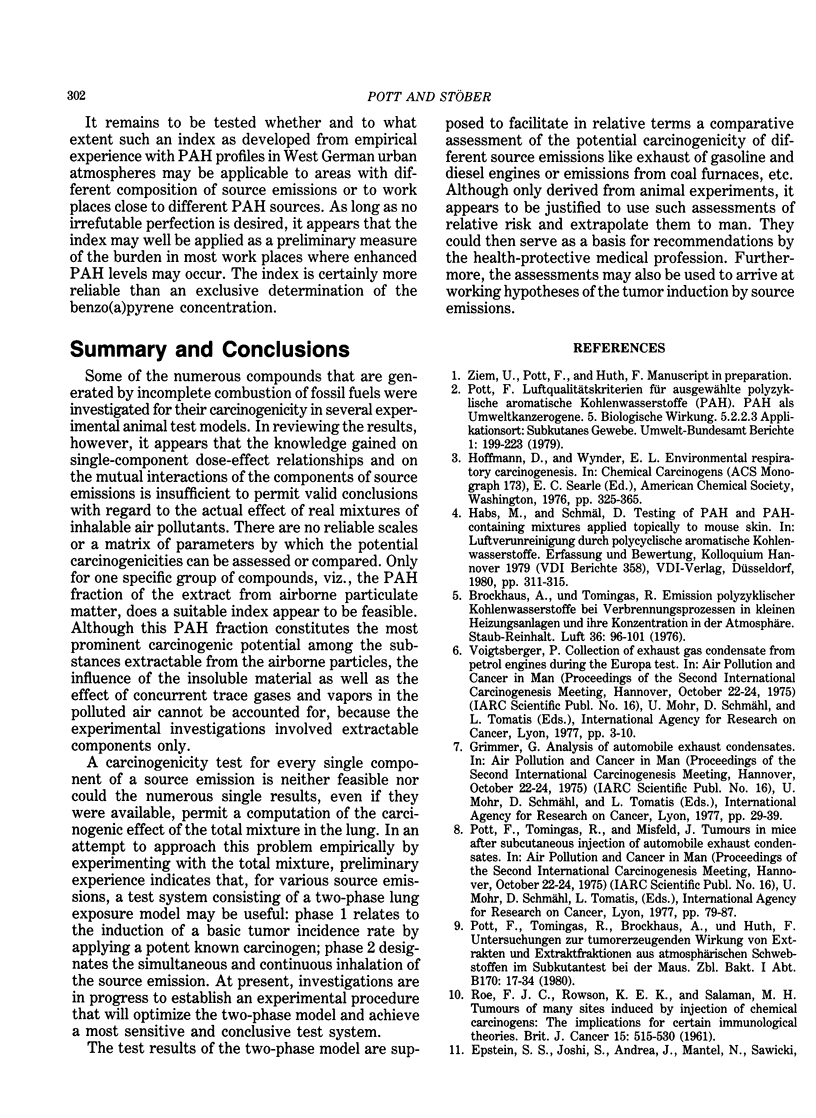

Selected References
These references are in PubMed. This may not be the complete list of references from this article.
- Feron V. J. Respiratory tract tumors in hamsters after intratracheal instillations of benzo(a)pyrene alone and with furfural. Cancer Res. 1972 Jan;32(1):28–36. [PubMed] [Google Scholar]
- Ketkar M., Reznik G., Schneider P., Mohr U. Investigations on the carcinogenic burden by air pollution in man. Intratracheal instillation studies with benzo(a)pyrene in bovine serum albumin in Syrian hamsters. Cancer Lett. 1978 Apr;4(4):235–239. doi: 10.1016/s0304-3835(78)94787-0. [DOI] [PubMed] [Google Scholar]
- ROE F. J., ROWSON K. E., SALAMAN M. H. Tumours of many sites induced by injection of chemical carcinogens into newborn mice, a sensitive test for carcinogenesis: the implications for certain immunological theories. Br J Cancer. 1961 Sep;15:515–530. doi: 10.1038/bjc.1961.62. [DOI] [PMC free article] [PubMed] [Google Scholar]
- SAFFIOTTI U., KOLB L. H., SHUBIK P. EXPERIMENTAL STUDIES OF THE CONDITIONS OF EXPOSURE TO CARCINOGENS FOR LUNG CANCER INDUCTION. J Air Pollut Control Assoc. 1965 Jan;15:23–25. doi: 10.1080/00022470.1965.10468328. [DOI] [PubMed] [Google Scholar]
- Saffiotti U., Montesano R., Sellakumar A. R., Cefis F., Kaufman D. G. Respiratory tract carcinogenesis in hamsters induced by different numbers of administrations of benzo(a)pyrene and ferric oxide. Cancer Res. 1972 May;32(5):1073–1081. [PubMed] [Google Scholar]


